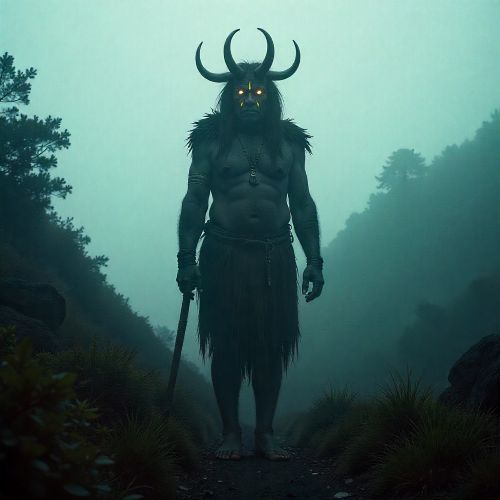Dani Mythology
Dani mythology lies at the heart of the Indigenous Dani people of the central highlands of Papua. Surrounded by towering mountains, fertile valleys, and mist-covered rivers, the Dani view their land as a sacred gift from ancestral beings who shaped the world and continue to guide the living. Their myths are passed through storytelling, ceremonial gatherings, and symbolic traditions that preserve their deep respect for nature and community.
A central theme in Dani mythology is the connection to ancestral spirits. The Dani believe that their ancestors remain close, protecting villages, crops, and families. Ritual houses known as honai act as important spiritual spaces where traditions are passed from elders to younger generations. The spirits are honored through daily respect, offerings, and community responsibilities, ensuring the balance between the visible and invisible worlds remains strong.
Nature plays a major spiritual role. The Dani perceive mountains as sacred guardians, rivers as life-bearing pathways, and animals as messengers or symbolic figures in myths. Their stories describe how spirit forces taught the Dani vital skills such as cultivating sweet potatoes — the most important food in highland life — along with hunting, tool-making, and social customs.
Rituals are essential expressions of mythology. Fertility, harvest success, and clan well-being rely on maintaining harmony with spiritual powers. Traditional ceremonies once included ritual warfare, believed to restore balance between clans when misfortune struck. While these practices have transformed in modern times, the concept of restoring spiritual equilibrium remains deeply rooted.
Dani mythology also explores life, death, and emotional expression. The well-known practice of iki palek — the symbolic removal of a fingertip to mourn a loved one — reflects a profound mythological belief: grief must be physically acknowledged to help a spirit transition peacefully. Though no longer practiced, this tradition illustrates how mythology guided emotional resilience and community unity.
The Dani continue to preserve their spirituality through vibrant practices like body painting, feathered headdresses, and pig feasts — events that celebrate ancestral heritage and social harmony. Even as modern influences reach the highlands, Dani mythology remains a source of identity, respect for land, and connection to those who came before.
Through these myths, the Dani uphold a worldview where every person, every mountain, and every living being shares in the sacred story of the highlands.


